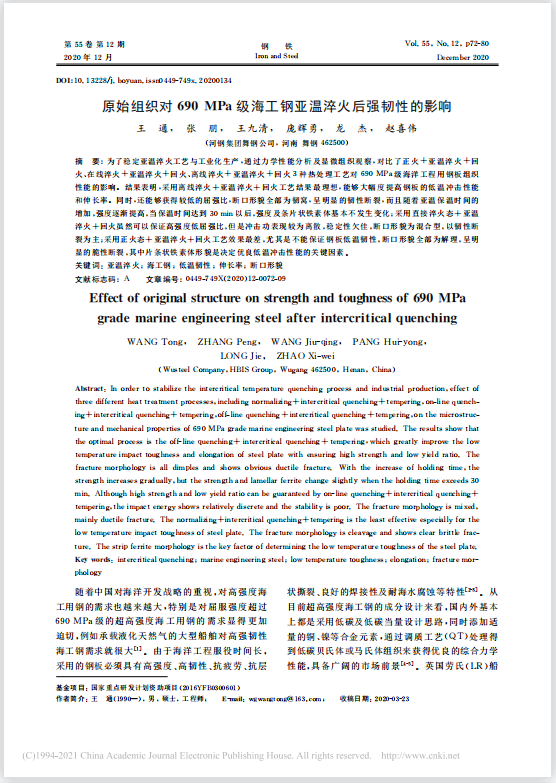The temperature drop curves of an ultra-heavy plate with a thickness of 137 mm after quenching are measured at different positions using a jet quenching equipment and a multi-channel steel plate temperature recorder. The effect of the jet impact (Z1), intersection interference (Z2), and transverse flow (Z3) heat transfer zones on the temperature gradient of an ultra-heavy steel plate during jet quenching was investigated. The corresponding relationships and interaction mechanisms between cooling rate, microstructure, and mechanical properties during jet quenching are studied. The results indicate that Z2 and Z3 had a greater influence on temperature gradient and microstructure evolution, and Z1 and Z2 had a greater influence on the cooling rate and mechanical properties. The experimental results have guiding significance for the development of new quenching equipment for ultra-heavy steel plates and their industrial application.
